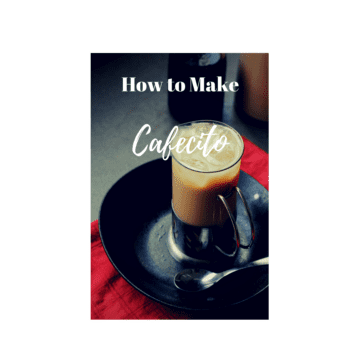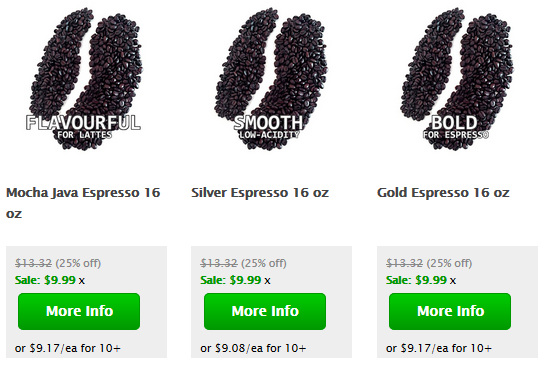What is a Cafecito (Cafe Cubano)?
The Café Cubano (Cafecito) is a prominent social drink in Cuba, Florida and many Cuban American communities. This coffee is very similar to a traditional espresso - strong brewed, in slightly larger quantity than actual espresso, and sweetened with sugar alone.
Cafecito is also the name of a sandwich shop in Chicago. A Cuban coffee is simply coffee from Cuba.

Cafecito Recipe (Cafe Cubano)
Ingredients
- 42 g Coffee espresso grind
- 420 ml Water
- 3 teaspoon Brown Sugar or demerara
Instructions
- Fill Moka Pot with water according to instructions
- Pack down coffee into stove top espresso maker chamber
- Place over moderate heat
- Add 1 teaspoon of sugar to 2 coffee cups
- As coffee fills the reservoir, pour ½ tablespoon of coffee over sugar to begin dissolving
- Return espresso maker to heat to complete brewing
- Beat the sugar and espresso mix in the cup with a spoon, until granules dissolve - this is known as "creaming the sugar"
- Pour brewed coffee over the creamed sugar, stirring slowly
- Pour coffee into espresso cups and serve
Notes
Best Coffee Bean for a Cafecito
The obvious choice for coffee selection here is a coffee from Cuba, making it an authentic Cuban coffee drink. Due to low production and export volumes however, alternatives need to be considered. Costa Rica is a great option as a substitute, as well as Honduras. A typical Cuban coffee bean is roasted fairly dark, which is enhanced further by the Demerara, and brewed very strong.
You'll want to ignore best practices on the amount of coffee per cup, and make it extra strong.
Coffee Maker: The Moka Pot (Stove Top Espresso)
Although the Moka pot doesn't actually make espresso, which has to be placed under 130.5 PSI, it does use water pressurized by steam to create a dark, rich coffee. This high pressure along with the steam extracts more flavor compounds and coffee solids and makes a coffee that has a mouthfeel and body more akin to espresso. The key to making coffee with a Moka pot is patience. Bring the coffee to a boil over moderate heat. Otherwise, you could burn the coffee grinds and burnt tasting coffee.
If you are going solo and want to treat yourself, make a single serving by adding the sugar directly to the espresso pitcher of an espresso maker. Doing so will cause the coffee and sugar to become more viscous than if you simply added sugar at the table. Although traditionally the Cafecito won't have milk or cream added to it, it's not uncommon for American's to add a splash of cream to their espresso.
It's easy to run to a coffee shop and pick up a few coffees after work for friends and family but for something special that you don't drink every day, the cafecito is worth the time to make. The extra effort that goes into making a cup of coffee such as the cafecito speaks to the Latin tradition of enjoying social time with friends and family.
Buy Gourmet Coffee Beans

- ✔️ Fresh roasted to order
- ✔️ 100% high qualtiy Arabica coffee
- ✔️ Custom grind (or whole bean)
- ✔️ 1-way valve, laminate bag (for freshness)
- ✔️ Bulk discounts

